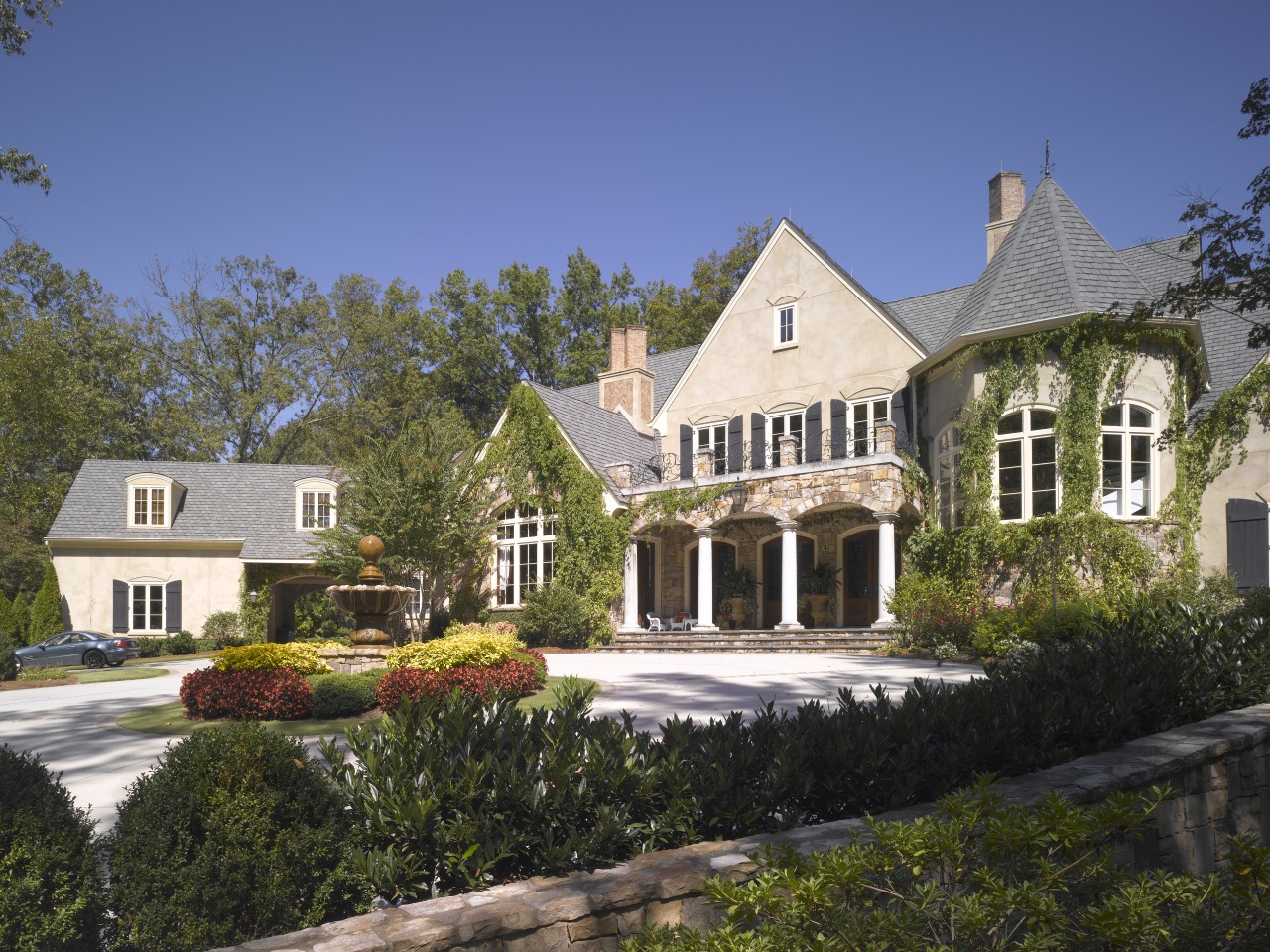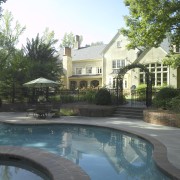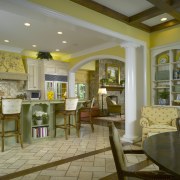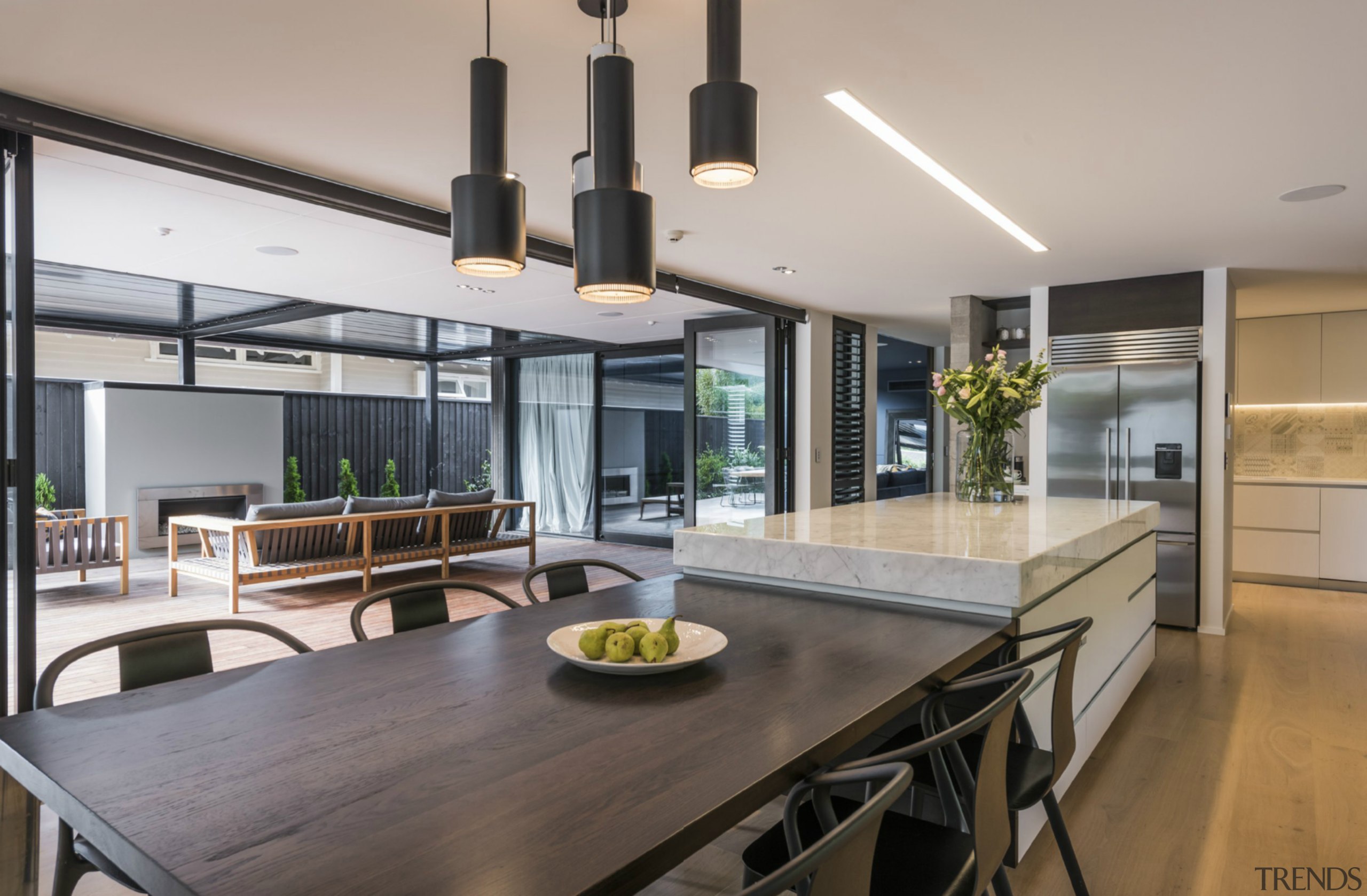Taste travels well
Architectural features drawn from the great houses of Europe provide a sense of history and grandeur for this residence
Europe's architectural legacy is a thing of shared beauty. Features gracing a manor in Provence may well be echoed on a home in northern Italy. However, greater distance and a different continent provide no boundaries to good taste, as classic European elements also bring distinction to upscale residences in the United States.
This house, by residential designer William T Baker, provides a good example of old-world architectural features being reinvented for the new world.
Baker says the owners wanted an upscale residence that would have a sense of grandeur and an implied history.
"I drew together several architectural elements from continental Europe and England to achieve this feel," says Baker. "The challenge is combining these disparate features to create one cohesive whole. Scale and rhythm are key."
From first arrival at the circular entry court with its central marble fountain, the classic influence is apparent. The house has an octagonal turret, worthy of a centuries-old French manor. In the center is a gabled entrance complete with Tuscan columns and stone steps. To the left is another gable to balance the composition. A garage is visually separated from the main residence by a traditional porte-cochére, or coach door.
"While the turret's form might have its roots in France or Germany, and the columns hail from Roman antiquity, these elements are in keeping with each other not least through scale," says Baker. "The central gable, turret, and left-hand gable are similar in size, with slight prominence given to the central gable signalling the entrance to the residence. I deliberately gave the adjacent garage a lower profile, ensuring it took secondary place to the main structure."
A sense of rhythm also draws the eclectic architectural elements together. The roof peaks, entrance arches and doors, and the windows above, all run in threes. The rear of the house has a similar patterning and upon entering the front doors, the layout is also grouped in this number. There is a the master suite to the left, the great living room straight ahead, and the kitchen and family room area to the right.
Proportion is important in the house's invocation of classicism in another way too. Beyond the limestone slabs in the entrance there is the great living room. Ceilings here are a distant 20ft from the classic furniture and antique rugs far below. The ceiling-to-floor drapes and a stone overmantel both decorate and accentuate the elongated stretches of wall space.
In the kitchen, classic detailing such as corbels on the kitchen island are matched by intricate painting on the range hood.
"Another aspect of the house is its emphasis on craftsmanship," says Baker. From the herringbone brickwork on the chimneys to the wrought ironwork on the front doors and turret's spiral staircase, the human touch is always prevalent."
The flagstones that floor much of the home extend the look of artisanal input. The materials themselves also evoke old-world charm. Stucco walls, elaborate brickwork, and slate-look roofs, as well as the marble and limestone pillars and floors, all play their part. These are building materials that have literally stood the test of time.
"While individual elements speak of European architecture and old-world craftsmanship, it is also very much an American house," says Baker. "An example is the placement of the master suite on the first floor a design element that provides easy access to the living spaces and out to the terrace at the rear of the house. This placement has become common in American architectural design."
Baker says the generous proportions alone contribute to the American flavor.
"Extensive landscaping on the property included the retention of towering, 100-year-old trees," he says. "Backdropped by these mature stands, what is actually a very large house is given a more, livable, human scale."
The ivy meandering across the exterior also contributes to the established look. In addition, briars running over a wrought iron arbor would be equally at home in a formal English garden another invocation of yesteryear.
Set amongst aged trees, the new home's old-world features, hand-crafted detailing and classic materials make it look as though it has been around for a very long while.
Credit list
Interior designer
Roofing
Chimneys
Stonework
Interior columns
Lighting
Countertop and backsplash
Refrigerator
Bathroom faucets
Shower fittings
Main contractor
Siding
Wrought ironwork
Exterior columns
Floors
Kitchen designer
Faucets
Ventilation
Vanity
Story by: Charles Moxham
Photography by: John Umberger Taste travels well Architectural features drawn from the great houses of Europe provide a sense of history and
Home kitchen bathroom commercial design













